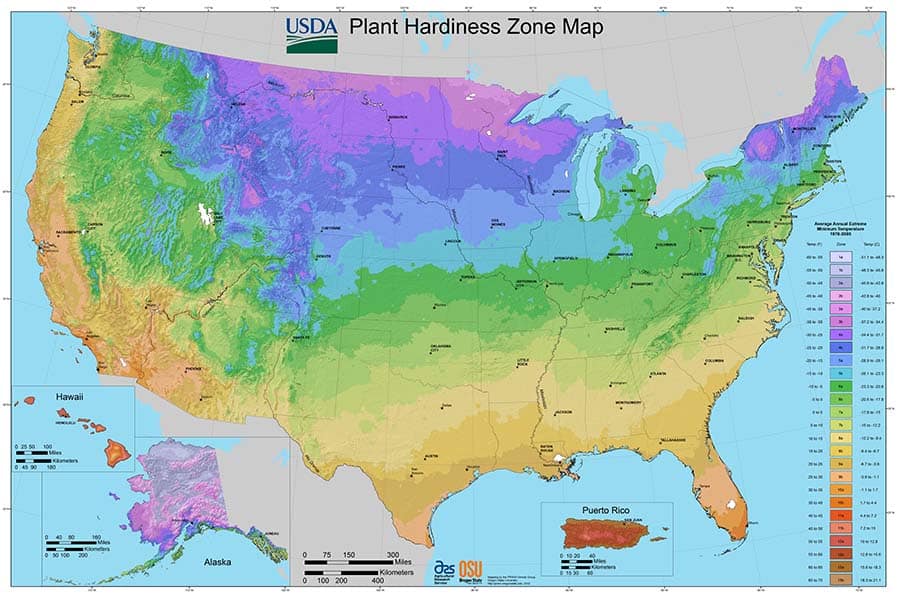When it comes to making your home look just as beautiful on the outside as it does on the inside, as soon as you begin your research, a common question that many homeowners have is if landscaping falls under construction. Knowing this answer will determine your path when it comes to the work you want to be done to your home.
Landscaping does fall under construction because it involves moving, destroying, installing, or building structures, as well as other projects such as excavating land, initiating site improvements, and possibly installing drainage systems.
This question comes up a lot because there are different types of landscaping and different types of landscapers, so knowing exactly what you want to be done will determine what kind of landscaper you need to hire. Knowing the differences will help save you time, money, and a lot of headaches!
Different Types of Landscaping
Most landscaping falls into two different categories: hardscapes and softscapes. Additionally, the location of the landscaping is important because there are different things to consider for front yard landscaping versus backyard landscaping.
Hardscapes
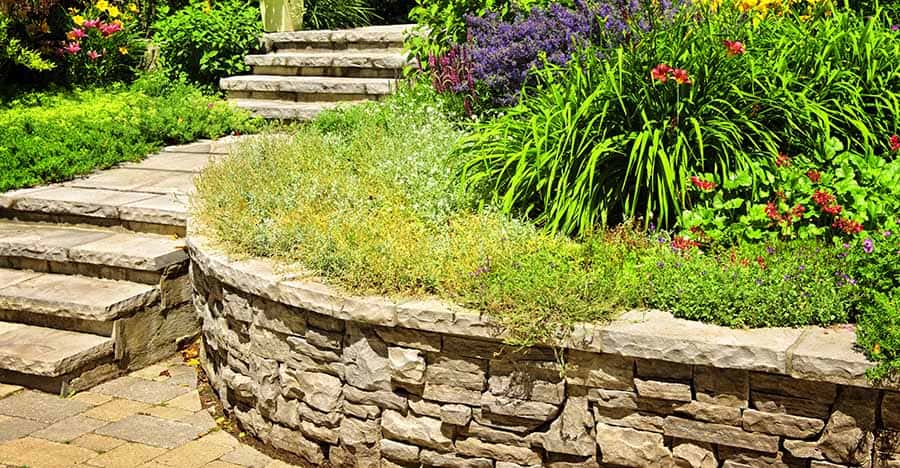
An easy way to remember what a hardscape is, is to always think about items that are hard and can’t be moved. For example, rocks, walkways, and paver patios are considered hardscapes. Other items such as retaining walls, water features, and even outdoor kitchens are also considered hardscapes!
Many homeowners think about hardscapes when they are looking to increase the functionality of their outdoor space, such as patios or stone fire pits. Hardscapes are going to be items that, once they are constructed, are going to be there for a very, very long time and require very little maintenance.
Softscapes
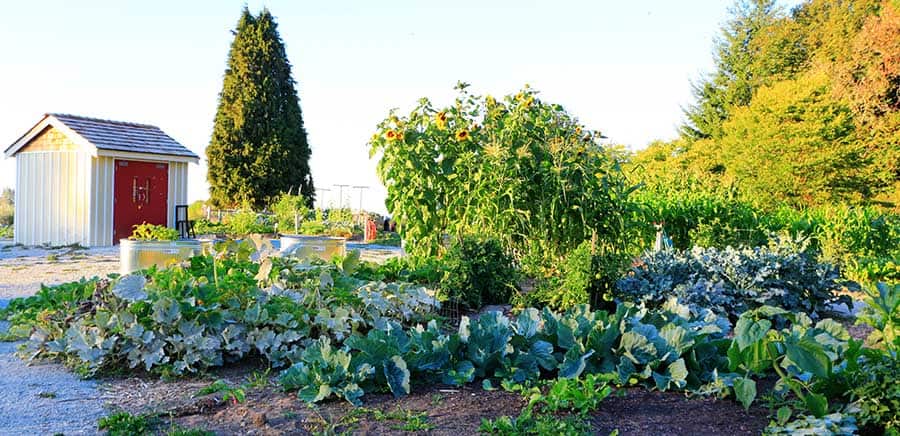
The opposite of hardscapes are softscapes, which include items that will change along with nature or can be easily removed or replaced. Examples of softscapes include pretty much any plants, shrubs, trees, and soil. Also, vegetable gardens, herb gardens, and ornamental grasses count as softscapes.
The landscape of a home should have a balance of both hardscapes and softscapes. For example, if all you have is a big driveway in front of your house, it may look cold and uninviting. However, if all you have are softscapes, your home might look like a jungle. Too much of one can definitely bring down the value of your home.
Front Yard Landscaping
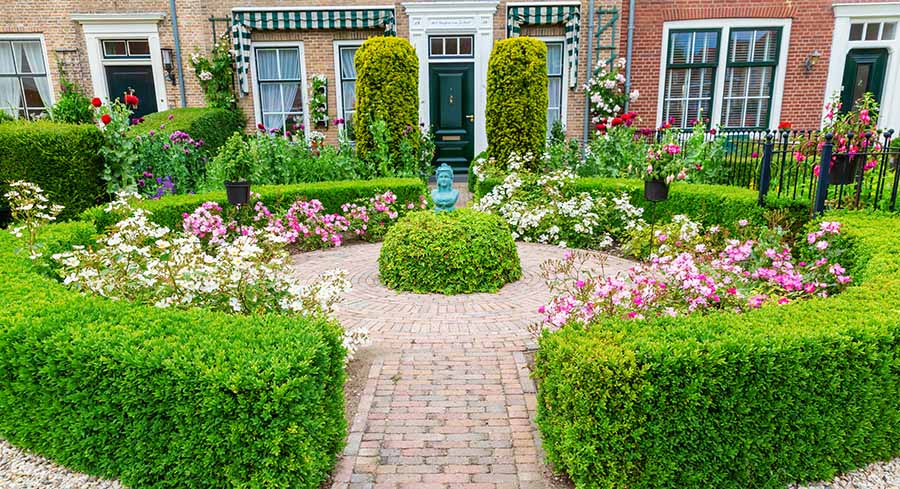
The front yard is where most people will first see your home, so it’s not only important for making a good first impression, but also to enhance the curb appeal of your home.
Some really important things to consider when it comes to landscaping your front yard are the size of your house and how much sunlight hits the front yard. There are actually four types of classifications regarding sunlight:
- Full sun
- Partial shade
- Shade
- Deep shade
Knowing which classification your front yard falls into is crucial when it comes to selecting any softscapes.
Some other important things to think about, as explained by Dorian Winslow, who is a certified landscape designer, include the following:
- Find the focal point of the front yard and make sure not to hide it.
- Use low-maintenance ground covers
- To keep people further from the house for added privacy, add shrubs and other plants
- Think at least 12-15 years in advance, especially if you are considering planting trees
- When it doubt, keep it simple
Backyard Landscaping

While the background can still have an influence on your home’s value, there are many more opportunities to be creative. If you’re looking for a place to entertain family and friends, or perhaps your own oasis to escape from the world, you can have it with the backyard.
When it comes to creating a vision for your backyard, Gardening Solutions, a branch of the University of Florida’s Institute of Food and Agricultural Sciences, provides some great tips:
- Again, it’s important to know how much sunlight hits your yard. Perhaps the sun hits more in one area than another. This is important when considering both hardscapes and softscapes.
- Keep in mind the climate, as well as the topography. The United States Department of Agriculture provides a Plant Hardiness Zone Map that can help you determine what kind of plants will be best for your yard.
- Observe where the water goes after it rains. This will be important if you need to install a drainage system.
- Think about who will be in your backyard. Again, if your vision is to entertain, you’ll want plenty of seating space and perhaps a walkway from the front yard. If it’s just you and your family, think about how you will use the backyard.
- Consider how much maintenance you’re willing to dedicate to your backyard. A lot of ideas sound great in theory, but maintaining it is a different story!
- Considering a theme for your backyard could help you determine how you want it to look. For example, if you want to transform your backyard to a place where you can relax, perhaps an oriental garden theme could be an option.
Transforming your front yard or backyard with hardscapes and softscapes can be very exciting. However, it can also be overwhelming. Perhaps you’re not sure which plants would be best to use, or you have an idea to create an entertainment space, but you’re not sure if what you have in mind will actually work.
Different Types of Landscapers
Now that you have a better idea of the different types of landscaping and how it differs from the front yard and the backyard, another important thing to understand is the different types of landscapers. What work you want to be done will determine what kind of landscaper you need to hire.
Landscape Architects
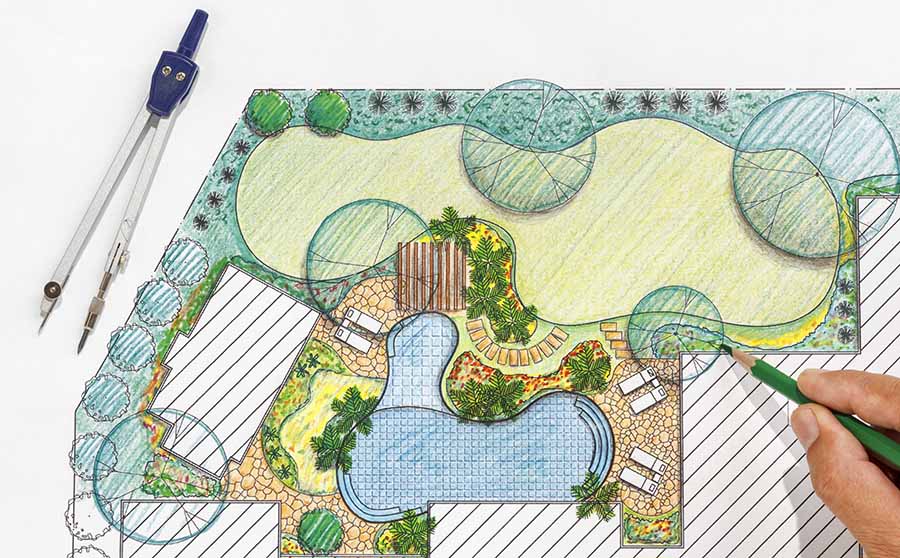
According to the American Society of Landscape Architects, a landscape architect is someone who is specialized in analyzing, planning, designing, and managing built and natural environments. In the U.S. alone, there are nearly 25,000 landscape architects.
Landscape architects don’t just work on homes, though residential landscaping is what they are most known for. Landscape architects are also the brains behind parks, town squares, and playgrounds.
If you’re not sure where to start when it comes to your front yard or backyard, seeking out a landscape architect is a good first step. A few things to keep in mind when selecting someone:
- Have at least some idea about what you want and what kind of style you’re looking for. This will help you find a landscape architect that aligns more with your own style.
- Have a budget in mind and a time frame when you want the project completed. The landscape architect will be able to tell you if your idea is feasible based on these two items.
- Be sure to research several different architects and see what previous projected they worked on. You can even visit different places they designed to see if you like their work.
- Make sure you have a clear understanding of their processes and steps. Most landscaping will be completed in phases, so it’s important that you understand each step and the respective timelines.
- Most importantly, in order to be a landscape architect, someone must earn a specialized architecture degree, pass a licensing exam, and take continuing education credits each year. All 50 states require a landscape architect to have a license, so this is an important thing to check when hiring someone.
Once the landscape architect has the plan finalized for your yard, they will most likely hire a landscape contractor for the next step.
Landscape Contractors
Once the design is set from the landscape architect, that is when a landscape contractor comes into the picture. The landscape contractor oversees the construction of drainage, both soil and water, any grading your yard may need, planting softscapes, and building or installing any hardscapes.
However, a landscape contractor is not required to work from any professionally designed plans from an architect. So, if you’re savvy at creating your own yard designs, you can work directly with a landscape contractor.
But just like a landscape architect, a landscape contractor needs a license. You can easily find the license number on their website. You also want to make sure the landscape contractor is bonded and insured in case of any unforeseen situations. And don’t be afraid to ask to see some samples of their work too.
Most importantly, when choosing a landscape contractor is to make sure they have a warranty and that you understand the details of the warranty. You can expect a contractor’s warranty to last anywhere from one to five years.
Landscape Designer
A landscape designer can be confused with a landscape architect because they have very similar jobs. Both of them are the masterminds behind the design of outdoor spaces. However, a landscape designer doesn’t have to have a degree. They can receive training in horticulture, but no formal education requirement is necessary.
Another scenario may be that a landscape designer does have the education. However, they have not received the license yet or don’t have enough experience to be considered a landscape architect. Being a landscape designer is a great way to get experience.
A landscape designer can also be a great option, but just like you would when considering a landscape architect or contractor, be sure you ask to see some of their previous projects and understand their processes and timelines.
Landscape Maintenance

After all the work is done, you need to maintain it! And that is where you can hire someone in landscape maintenance. This can involve fall and spring clean up, cutting the grass, pruning bushes, removing leaves, weeding, mulching, and clearing out irrigation systems.
As mentioned previously, it is important to consider the upkeep of your landscape work once it’s completed. Do you have the time to maintain your yard, or will you need to hire someone to do it?
While someone doesn’t necessarily need any formal education to do landscape maintenance, they must have some training and knowledge, depending on why you need them.
For example, certain plants should be trimmed during certain times of the year to avoid damage. Or if you want your grass looking nice and green, you should hire someone who understands how to maintain healthy grass.
When hiring someone to do landscape maintenance, make sure that you ask questions about exactly what their services entail. For example, spring clean up can include a variety of options, such as leaf removal, seeding, fertilizing, etc.
Once you have discussed all the services you need, make sure that you receive a detailed contract that entails all the services and a calendar when you will receive those services. This will make sure that you understand what is included and not included when hiring someone to do landscape maintenance.
Honorable Mention: The Horticulturist
Depending on the work you need to be done, a horticulturist can also be a great fit. This is someone who is trained specifically in the study of plants and understands which plants work best in different kinds of environments.
To be a horticulturist, most states require someone to have a degree in horticulture. They are plant experts, but that doesn’t mean they know much about designing outdoor spaces. If you just need some expert opinions about which plants to place in your hard, a horticulturist is perfect for the job.
Planning for Your Landscape Project
Now that you understand the different types of landscapes and the different types of landscapers, now you’re ready to begin brainstorming how you’ll transform your yard!
We have shared tips throughout this article, but there are several additional things to consider before you start shoveling outside or sign a binding contract.
Have a Plan
The biggest mistake homeowners make when it comes to landscape projects is not having a clear, set plan. It is critical to have a plan and that you vet that plan to make sure what you have in mind is feasible and within your budget.
Does your yard have any potential issues, like drainage or poor soil? Or perhaps there may be issues you aren’t even aware of, so it’s important to at least get a professional to survey your land even if you decide to do all the work yourself.
There are several ways to gather ideas for your landscape project, such as magazines, books, Pinterest, or walking around your neighborhood. Again, think about how you plan to use the space when considering design ideas.
Follow Some Basic Design Principles
Depending on your goals for transforming your outdoor space, there are several easy to follow design principles to keep in mind. Select which ones to follow based on your landscape project.
- Keep it simple –when it doubt, keep the design simple. Not only will it keep your outdoor space clean, but it will also be easier to maintain.
- Don’t be afraid of variety –Consider a variety of colors and shapes when it comes to selecting softscapes and hardscapes. This can create some really neat visuals in your yard and can be great conversation starters.
- Balance helps with focus – If your focal point is the front door, planting trees or shrubs on each side is a balance that helps provide that focus.
- Keep in mind proportions –The size of your hardscapes and softscapes will need to be adjusted based on the size of your house and your yard. Additionally, your hardscapes and softscapes should complement each other.
Don’t be Afraid to Ask Questions
If you are hiring an architect, contractor, designer, horticulturist, or someone for landscape maintenance, don’t be afraid to ask questions. You must express your thoughts and budget right at the beginning of the process. This will help prevent some major headaches and disappointments.
Also, by asking questions, you can get a better feel for the professional you’re thinking about hiring. Most importantly, you need to feel comfortable and feel like they understand your vision.
Important Words to Know
When working with professionals, they will probably use some words that you haven’t heard before. Some commonly used words in landscape construction include:
- Topography –this describes the land’s terrain or can be used when describing the rise and fall of the land
- Slope –this is the steepness of the land
- Grading—this is the process of moving soil in order to shape the land
- Final grade –the final layer of soil placed over the grading
- Fill –when soil is added to the land
- Cut –when soil is removed from the land
- Swale—when installing a drainage system, a swale is the area that acts as an open-drain
- Berm –a mound of soil that can be used as a type of softscape
- Soil compaction –the damaged caused to the land due to heavy equipment
By understanding these words, it will help you understand what the professionals are saying, and you can ask more informed questions.
For example, if they are planning to grade the land, you can ask where they are going to store the excess soil once it’s removed if space is a concern.
Don’t Forget About Your Pets

If you have pets that love to spend their time outside, this is important to consider if you’re doing your own work or hiring a professional. Some plants are considered toxic to animals, so if your furry friend likes to munch of plants, you want to make sure you select softscapes that won’t pose any danger.
Are You Within HOA Guidelines?
If you are part of a home owners association (HOA), you need to double-check the guidelines just to make sure what landscape work you’re allowed to do. Reviewing the guidelines can also help save you a ton of headache and disappointment.
Is There a Return on Investment?
Of course, it’s important to keep in mind your budget when planning a landscaping project. Perhaps the estimate came back a little more than what you had planned. But it is also helpful to think about what the return on investment will be for your home.
Depending on the landscape construction project, it can add anywhere from 5.5 percent to 12.7 percent to the value of your home. So, for example, a great landscape project can add anywhere from $16,000 to nearly $40,000 to the value of a $300,000 home.
Conclusion
Now that you know that landscape falls under construction, you also know there are a variety of ways to transform your outdoor spaces. Be sure to plan ahead, vet the professionals, and don’t forget to have fun. You’ll have a customized home that fits your style and a nice bump in your home’s value.


